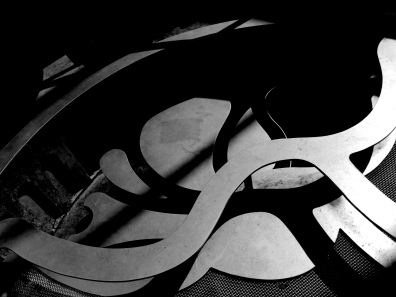If someone claims he “wants to be an artist” when he graduates, what careers would you assume he is talking about? A painter, an actor, a singer, a pianist?
What about an architect, a chemist, a graphic designer, a journalist or a chef?
Art is expression, creation, individuality, and beauty. Consider the multiplicitous facets of an art museum: there are billboards with snappy phrases announcing the new exhibitions, expansive lobbies welcoming patrons inside, and an unending amount of careful attention that has been devoted to the safety and maintenance of its contents.
Whether an artist prefers mixing paint on a palette or ingredients in a beaker, he still expresses and creates.
Communications
According to Communications department chair Margaret Rakus, “effective communications are thoughtful, strategic, audience-focused interactions. Many times organizations — and people — communicate what they are interested in sharing without insight about what might get an audience to yield to a message, regardless of the mode of communication.”
Communication majors usually land jobs as magazine editors, publishers, or public speakers– all of which require sharing individual and innovative thoughts that must then be crafted with an astute attention to how the words attract and influence audiences. Sound familiar? Communicators seek to augment the literal content of any piece of text with aesthetic elements that make people feel the message while they read. With each carefully-planned, evocative piece of media they publish, professionals in the Communicators field occupy backstage roles to a very interesting kind of performance art: the distribution of current media.
Graphic Design
Graphic Design involves using technology to promote specific ideas, usually on behalf of a company to a large audience. In many ways, graphic designers chase dreams of “stardom” akin to those of the actor-waiting-tables; an arguable amount of pride and prestige amounts from seeing your hard work displayed across billboards, television screens, and movie posters.
The possibilities are endless, but first, creativity must burst from the mind to the page. Dan Davis, Albright’s class of 2014, uses graphic design as one of his many creative outlets.
“I put my imagination and my art into the computer and I try to use the program to really make my creations come to life,” Davis says.
Science
Without a doubt, a good scientist is both innovative and creative. Therefore, the large portion of Albright students who plan to be scientists are also striving to be artists.
“There’s a certain way your body functions,” says Bio-chem major Julia Bryson, a Class of 2017, “and dissecting is an art with the way the incisions have to be made and the way your organs are placed to be able to function properly.”
Art is precise.
Art is careful.
Art is mixing techniques to create a desirable result.
Both art and the sciences rely on hypotheses, for humans are constantly seeking newer, better, and more interesting means of living.
Architecture
Because the stature of a typical architect, a burly man with a macho personality and muscles to match, hardly coincides with the “starving artist” silhouette, you may not immediately group the “artist” and “architect” under the same categorical bracket. However, planning and sketching a blue print is art in and of itself. An architect has to have a creative vision in his head for how they want a building to look, and he adds each line to that blueprint for a specific reason and purpose.
For several years, the study of architecture has been a hobby of Albright History professor John Pankratz, who says that architecture “clearly is a human construction, a shaping of the environment by human hands for a purpose.”
By shaping the environment, architects shape a work of art. They construct something that was once not there. They build something useful and attractive. The severely underestimated beauty of buildings highlights the enormous amount of creativity that must be exuded for the modern world to exist as it does.
Needless to say, it is important that we observe the immense amount of creativity and artistic flare imperative to every element of the world regardless of its specific discipline. With an open mind, it is possible to appreciate all of the art surrounds us– not just the pieces in the gallery.
article by Lani Panico
photographs by Meredith Wray

